Browse in the Library:
| Artist or Composer / Score name | Cover | List of Contents |
|---|---|---|
| A dozen A Day Book 1 Technical exercises for the piano |
 |
A dozen A Day Book 1 Technical exercises for the piano |
| A dozen A Day Book 2 Technical exercises for the piano |
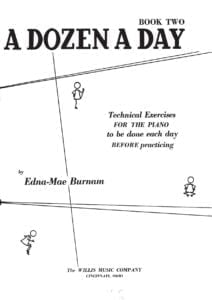 |
|
| A dozen A Day Book 3 Technical exercises for the piano |
 |
|
| A dozen A Day Book 4 Technical exercises for the piano |
 |
|
| A dozen A Day Mini Book Technical exercises for the piano |
 |
|
| A dozen Day Preparatory Book Technical exercises for the piano |
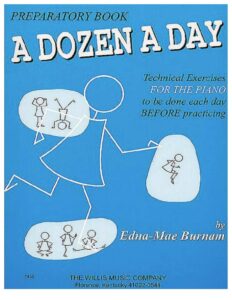 |
|
| A Farewell To Arms Love Theme From A Farewell To Arms film by Mario Nascimbene Francis Webster 1957 |
 |
|
| A Felicidade (Antonio Carlos Jobim) | ||
| A Festival Gathering Of Carols (Musescore File).mscz | ||
| A Fine Frenzy – Almost Lover |
 |
|
| A Fistful of Dollars (Ennio Morricone) | ||
| A Generative Theory Of Tonal Music by Fred Lerdahl and Ray Jackendoff (Book) |
 |
|
| A Guide To Guitar Chords by Curt Sheller |
 |
A Guide To Guitar Chords by Curt Sheller |
| A Guide To Musical Analysis by Nicholas Cook (Book) |
 |
|
| A Handbook Of Piano Playing (By Eric Hope) (1962) |
 |
|
| A Heart Full Of Love (Musescore File).mscz | ||
| A love suicide (Yutaka Minobe) | ||
| A Love Supreme (by Ashley Kahn) The story of john Coltrane’s signature album (Book) |
 |
|
| A Media Luz (Edgardo Donato) | ||
| A Modern Approach To Jazz Rock And Fusion For Guitar with Tablature |
 |
A Modern Approach To Jazz Rock And Fusion For Guitar |
| A Modern Method For Guitar (Berklee) 1 by William Leavitt |
 |
A Modern Method Berklee 1 |
| A Modern Method For Guitar (Berklee) 2 by William Leavitt |
 |
A Modern Method For Guitar (Berklee) 2 |
| A Modern Method For Guitar (Berklee) 3 by William Leavitt |
 |
A Modern Method For Guitar (Berklee) 3 |
| A MOZART REINCARNATED (Ennio Morricone) |
 |
|
| A Mozart Reincarnated by Ennio Morricone (Musescore File).mscz | ||
| A New Approach To Ear Training by Leo Kraft (BOOK) |
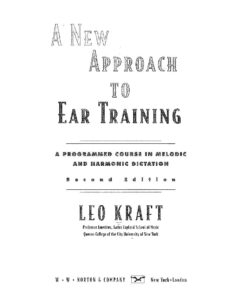 |
|
| A New Approach To Piano Technique (By Ruth A. Dickerson) (1962) |
 |
A new approach to piano technique |
| A Night In Tunisia – Dizzy Gillespie.mscz | ||
| A Pedal Method For The Piano (By Albert F Venino) (1893) |
 |
|
| A Popular Account Of Ancient Musical Instruments And Their Development by William Lynd (Book 1897) |
 |
|
| A Rockin’ Christmas Piano Vocal Guitar |
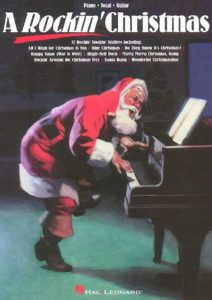 |
20 songs to sing on a rockin’ Christmas Eve Includes: All I Want for Christmas Is You * Grandma Got Run Over by a Reindeer * Happy Xmas (War Is Over) * Jingle-Bell Rock * Merry Merry Christmas Baby * Rockin’ Around the Christmas Tree * Santa Baby & moreRockin Christmas |
| A Single Man – George’s Waltz (Shigeru Umebayashi) | ||
| A Single Man – Stillness of the Mind (Abel Korzeniowski) | ||
| A Smooth Jazz Christmas – Mellow Seasonal Favorites for Piano arr. Roger House |
 |
A Smooth Jazz Christmas – Mellow Seasonal Favorites for Piano arr. Roger House |
| A Song For You – Leon Russell Ray Charles (Musescore File).mscz | ||
| A Star Is Born – Always Remember Us This Way Lady Gaga |
 |
|
| A Star Is Born – Shallow Lady Lady Gaga |
 |
|
| A Tale Of Two Sisters Ost – Epilogue Piano Solo |
 |
|
| A Thousand Years – Twilight OST (Christina Perri) | ||
| A Time For Love – Johnny Mandel |
 |
|
| A Time For Us – Guitar TABlature |
 |
|
| A Time For Us (Love Theme from Romeo and Juliet) Nino Rota |
 |
|
| A Time For Us (Romeo and Juliet OST) Nino Rota | ||
| A Touch Of Jazz 14 well-known hymns, gospel songs and contemporary praise songs by Wolaver Bill |
 |
A Touch Of Jazz 14 well-known hymns, gospel songs and contemporary praise songs by Wolaver Bill |
| A Tribute To Ella Fitzgerald Piano Vocal Guitar |
 |
A tribute to ELLA FITZGERALD |
| A Walk To Remember – Only Hope | ||
| A whiter shade of pale – Procul Harum | A whiter shade of pale – Procul Harum | |
| AaRON U-turn Lili Piano |
 |
|
| Ab Ovo – Joep Beving (Musescore File).mscz | ||
| Abba – Abba Gold – Greatest Hits |
 |
ABBA Gold Geatest Hits booksong sheet music |
| Abba – Chiquitita | ||
| Abba – Dancing Queen | ||
| Abba – Fernando | ||
| Abba – I Have A Dream | ||
| Abba – Like An Angel Passing Through My Room | ||
| Abba – Mamma Mia | ||
| Abba – Slipping Through My Fingers | ||
| Abba – Thank You For The Music | Abba-Thank-You-For-The-Music 1st page | |
| ABBA – Thank You For The Music (Piano Vocal Guitar) | ABBA – Thank You For The Music (Piano Vocal Guitar) | |
| ABBA – Thank You For the Music (Piano vocal Guitar) (Musescore File).mscz | ||
| Abba – Thank You For The Music Piano & vocal | Abba – Thank You For The Music-abba-satb | |
| Abba – The Winner Takes It All | ||
| ABBA Dancing Queen Easy Piano Solo |
 |
|
| ABBA Fernando (Piano Solo arr.) |
 |
|
| ABBA Fernando (Piano Solo arr.).mscz | ||
| ABBA Greatest Hits |
 |
ABBA GREATEST HITS SHEET MUSIC BOOK |
| ABBA I Have A Dream |
 |
|
| Abba The Very Best Vol 1 Easy Piano Hans Gunter Heumann Pop Classics For Piano |
 |
Abba The Very Best Vol 1 Easy Piano |
| Abba The Very Best Vol 2 Easy Piano Hans Gunter Heumann Pop Classics For Piano |
 |
Abba The Very Best Vol 2 Easy Piano |
| Abbey Lincoln Songbook |
 |
Abbey Lincoln Songbook |
| Abbey Lincoln Songbook Piano Vocal Guitar Chords |
 |
Abbey Lincoln Songbook Piano Vocal Guitar Chords |
| Abdullah Ibrahim – The Piano World Of |
 |
Abdullah Ibrahim, The Piano World Of |
| Abdullah Ibrahim The African Piano Of Abdullah Ibrahim Vol 1 |
 |
Abdullah Ibrahim The African Piano Of Abdullah Ibrahim Vol 1 |
| Abdullah Ibrahim The Wedding (piano solo transcription sheet music, partition) |
 |
|
| Abel Korzeniowski – Death Is My Heir (from Romeo and Juliet) |
 |
|
| ABRSM Jazz Piano Pieces Grade 1 to 5 |
 |
ABRSM Jazz Piano Pieces Grade 1 to 5 ABRSM Jazz Piano Pieces Grade 5ABRSM Jazz Piano Pieces Grade 5 |
| ABRSM Piano Exam Pieces Grade 1 (2016) |
 |
ABRSM Piano Exam Pieces Grade 1 (2016) |
| ABRSM Piano Scales, Arpeggios Grade 8 |
 |
|
| ABRSM Piano Scales, Arpeggios and broken chords Grade 1 |
 |
|
| ABRSM Piano Scales, Arpeggios and broken chords Grade 4 |
 |
ABRSM Piano Scales, Arpeggios and broken chords Grade 4 |
| ABRSM Piano Scales, Grade 2 A Guide for Students and Teachers | ABRSM Piano Scales, Grade 2 A Guide for Students and Teachers | |
| ABRSM – Time pieces for guitar vol. 1 |
 |
|
| ABRSM – Time pieces for guitar vol. 2 |
 |
|
| ABRSM 2017 18 Piano Exam Pieces Grade 1 |
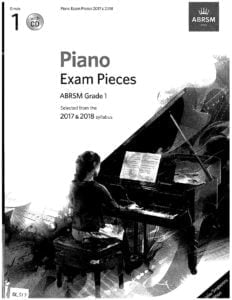 |
ABRSM 2017 18 Piano Exam Pieces Grade 1 |
| ABRSM 2017 18 Piano Exam Pieces Grade 2 |
 |
ABRSM 2017 18 Piano Exam Pieces Grade 2 |
| ABRSM 2017 18 Piano Exam Pieces Grade 3 |
 |
|
| ABRSM 2017 18 Piano Exam Pieces Grade 4 |
 |
|
| ABRSM 2017 18 Piano Exam Pieces Grade 5 |
 |
|
| ABRSM 2017 18 Piano Exam Pieces Grade 6 |
 |
|
| ABRSM 2017 18 Piano Exam Pieces Grade 7 |
 |
|
| ABRSM 2017 18 Piano Exam Pieces Grade 8 |
 |
|
| ABRSM 2021-2022 Piano Exam Pieces Grade 1 |
 |
|
| ABRSM 2021-2022 Piano Exam Pieces Grade 2 |
 |
|
| ABRSM 2021-2022 Piano Exam Pieces Grade 3 |
 |
|
| ABRSM 2021-2022 Piano Exam Pieces Grade 5 |
 |
|
| ABRSM 2021-2022 Piano Exam Pieces Grade 6 |
 |
|
| ABRSM 2021-2022 Piano Exam Pieces Grade 8 |
 |
|
| ABRSM 2021-2022 Piano Exam Pieces Initial Grade |
 |
ABRSM 2021-2022 Piano Exam Pieces Initial Grade |
| ABRSM Aural Training In Practice Book 1 Grades 1 to 3 |
 |
|
| ABRSM Aural Training In Practice Book 2 Grades 4 and 5 |
 |
|
| ABRSM Discovering Music Theory (Complete) Grades 1 to 5 Workbook by Simon Rushby (2020 Exams) |
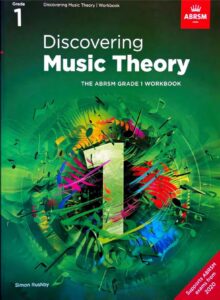 |
ABRSM Discovering Music Theory (Complete) Grades 1 to 5 Workbook by Simon Rushby (2020 Exams) contents |
| ABRSM Erster Verlust Grade 4 ABRSM Piano Exam Pieces 2021 & 2022 |
 |
|
| ABRSM Etude In A Minor – Dmitry Kabalevsky ABRSM Grade 4 Piano Exam Pieces 2021 & 2022 |
 |
|
| ABRSM Grade 2 – Inter-City Stomp byChristopher Norton From Microjazz Collection (Sheet Music) |
 |
|
| ABRSM Initial Grade Piano Exam Pieces 2023 2024 |
 |
|
| ABRSM Minuet and Trio D 41 No 21 – Franz Schubert ABRSM Grade 4 Piano Exam Pieces 2021 & 2022 |
 |
|
| ABRSM More Music Theory Sample Papers Grade 5 For New Format |
 |
|
| ABRSM Music Theory In Practice, Grade 1 (Eric Taylor) |
 |
|
| ABRSM Music Theory In Practice, Grade 2 (Eric Taylor) |
 |
|
| ABRSM Music Theory Past Papers Grade 1 2004 |
 |
|
| ABRSM Music Theory Past Papers Grade 4 2016 |
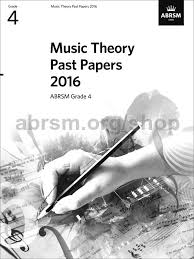 |
|
| ABRSM Music Theory Past Papers Grade 5 2012 |
 |
|
| ABRSM Music Theory Past Papers Grade 6 2013 |
 |
|
| ABRSM Nikki Iles Danny Boy ABRSM Piano Exam Grade 8 2023 Jazz Piano arr. inspired by Bill Evans |
 |
|
| ABRSM Nikki Iles Friends Book 1 Intermediate Jazz Pieces For Piano |
 |
ABRSM Nikki Iles Friends Book 1 Intermediate Jazz Pieces For Piano |
| ABRSM Nikki Iles Friends Book 2 Intermediate To Advanced Jazz Pieces For Piano |
 |
ABRSM Nikki Iles Friends Book 2 Intermediate To Advanced Jazz Pieces For Piano |
| ABRSM Nikki Iles The Elephant Parade ABRSM piano Exam |
 |
|
| ABRSM Piano 2025-2026 Grade 8 C3 A Nightingale Sang in Berkeley Square by Sherwin – Maschwitz |
 |
|
| ABRSM Piano Exam 2007-2008 Grade 3 |
 |
|
| ABRSM Piano Exam 2015-16 Grade 3 |
 |
ABRSM Piano Exam 2015-16 Grade 3 |
Bill Evans – Autumn in New York with transcription with sheet music

Best Sheet Music download from our Library.
Autumn in New York
Composed by Vernon Duke (Jazz Transcription)
During the course of his career, composer Vernon Duke worked with the most talented lyricists of the period—including Johnny Mercer, Ira Gershwin, Sammy Cahn, Yip Harburg, and Ogden Nash—but for this song he contributed his own words.
The circumstances were happenstance, but the results enduring. Unlike most of his other well-known works, this tune was written without a commission or show in mind, inspired merely by the composer’s longing for New York
during a stay in Westport, Connecticut, in the late summer of 1934.
Yet this orphan tune would prove to be one of Duke’s most popular works, and until John Kander and Fred Ebbs raised the bombast level with their song “New York, New York” in 1977, it would stand as the definitive Big Apple standard.
Yet, I can’t give Duke all the credit here. Earlier in 1934, he had enjoyed a huge hit with “April in Paris,” and his new song imitated the same “city and season” concept as well as the nostalgic imagery that lyricist Yip Harburg had contributed to the prior work. Even so, Duke gets kudos for the daring of his wordplay.
How many tune smiths, seeking a rhyme for “inviting,” would settle on the syntactically challenged “thrill of first-nighting”? Or, with New Yorkers inmind, envision “dreamers with empty hands” sighing for “exotic lands”?
Vernon Duke also doubled as a serious composer, and this piece, more than any of his other popular efforts, seems to straddle the divide between conservatory ambitions and commercial considerations, especially in its unusual harmonic movement.
When the song eventually resolves into F minor, you can look back and contemplate the intricacy and misdirection of a structure that never states that chord at any point in its first 24 bars. The melody, with its alternation of downward-stepping and upward-sweeping phrases, perfectly
matches the emotional arc of the words.
“Autumn in New York” found a home in Murray Anderson’s 1934 revue Thumbs Up —Duke offered it when he learned the producer was looking for a song celebrating Manhattan in the fall. But the show, which opened in December 1934, never made it to autumn, closing in early May after 156 performances.
Little fanfare greeted “Autumn in New York” at the time, and the song languished for 15 years, before Frank Sinatra turned it into a hit record with his 1947 interpretation. Sinatra, whose renditions remain the measuring rods for
all other versions of “Autumn in New York,” would return to it again during two fall sessions: an October 1957 date for Come Fly with Me, and, finally, on an autumn day in New York itself, at his celebrated Madison Square Garden concert
from October 1974.
The song has inspired more than a few outré reconfiguration. Bud Powell’s Birdland performance from 1953, where he is joined by Charles Mingus and Art
Taylor, is both eloquent and disturbing, with jarring cross-rhythms and a tonal palette that occasionally seems more suited for a horror film soundtrack than a modern jazz trio.
On his 1954 recording, Shelly Manne dispenses with bass and harmony instruments entirely, instead engaging in an avant-garde musical conversation with Shorty Rogers and Jimmy Giuff re. And for his solo piano performance at the Maybeck Recital Hall, from 1990, Steve Kuhn does occasionally insert a chord or two, but they typically bear no obvious relation to those Vernon Duke provided in his sheet music. This is a stream-of-consciousness version of “Autumn in New York,” which eventually gets us to Manhattan, but only after many detours.
Recommended versions
Frank Sinatra, New York, December 4, 1947
Billie Holiday, Los Angeles, May 1952
Bud Powell (with Charles Mingus), live at Birdland, New York, May 30, 1953
Modern Jazz Quartet, from Django , June 25, 1953
Dexter Gordon, from Daddy Plays the Horn , Hollywood, September 18, 1955
Shelly Manne, Jimmy Giuffre, and Shorty Rogers, from The Three & The Two, Hollywood, September 10, 1954
Steve Kuhn, from Live at Maybeck Recital Hall, Vol. 13 , live at Maybeck Recital Hall, Berkeley, California, November 18, 1990
Mark Turner, from Mark Turner, New York, December 7, 1995.
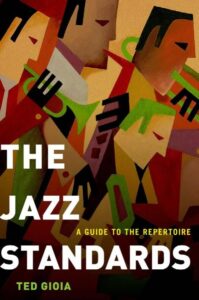
(From the book by Ted Gioia “The Jazz Standards A Guide To The Repertoire”).
Bud Powell – Autumn in New York (1954)
Personnel:
Bud Powell (Piano)
George Duvivier (Bass)
Art Taylor (Drums)
Tommy Potter (Bass)
Roy Haynes (Drums)
Billie Holiday – Autumn In New York (1952)
Lyrics
Verse
It’s time to end my lonely holiday
And bid the country a hasty farewell.
So on this gray and melancholy day
I’ll move to a Manhattan hotel.
I’ll dispose of my rose-colored chattels
And prepare for my share of adventures and battles
Here on the twenty-seventh floor,
Looking down on the city I hate and adore!
Refrain:
Chorus 1
A
Autumn in New York
Why does it seem so inviting?
Autumn in New York
It spells the thrill of first nighting.
B (Bridge)
Glittering crowds and shimmering clouds
In canyons of steel,
They’re making me feel
I’m home.
Chorus 2
A
It’s Autumn in New York
That brings the promise of new love.
Autumn in New York
Is often mingled with pain.
C
Dreamers with empty hands
May sigh for exotic lands
It’s Autumn in New York
It’s good to live it again.
The Story behind “Autumn in New York”
Prohibition of the public manufacture of alcoholic beverages had been established in 1919, through the Eighteenth Amendment to the Constitution. It was repealed in 1933 by the 21st Amendment, as everyone ultimately recognized
that the law was effective only in the production of gangsters connected with the bootlegging industry.
In 1934, the construction of cocktail lounges became
a major part of the building industry. As crime associated with bootlegging wound down, so did many of its stellar
figures. John Dillinger (1902-34), bank robber and murderer extraordinaire (sixteen known killings), was shot to death by agents in July as he left a movie theater where he had just seen Manhattan Melody.
Everyone loved the movies in those days. Folk figures ‘‘Baby Face’’ Nelson, ‘‘Pretty Boy’’ Floyd, and Bonnie and Clyde—later immortalized in a movie—also went to meet their maker, all under violent circumstances.
The Hays Office established a code of decency for the motion picture industry, including a ban on the depiction of double beds or naked babies, or any suggestion of seduction or of cohabitation without marriage. Unmarried Hollywood
couples allegedly included Clark Gable and Carole Lombard, George Raft and Virginia Pine, and Robert Taylor and Barbara Stanwyck.
As usual, American culture was riddled with contradictions.
The continuing erosion of soil in the plains states from dust storms was responsible for the increasing migration westward. This national tragedy and its consequences were later immortalized in John Steinbeck’s 1939 Pulitzer Prize
winning book, The Grapes of Wrath.
Also on the national scene, the Social Security Act was passed, while unemployment was at 21.7%. A ticket to the Metropolitan Opera on a Saturday evening cost between $1.50 and $4.00, but the price of admission to a movie was between 35 and 50 cents.
Movies flourished with such gems as Academy Award-winning It Happened One Night (starring Clark Gable and Claudette Colbert), The Gay Divorcée (Fred Astaire and Ginger Rogers), and Of Human Bondage (Leslie Howard and Bette Davis).
In popular music, the Big Band era was in full swing, literally, with Benny Goodman, Duke Ellington, Jimmy Lunceford, the Dorsey Brothers, and other fine groups.
Songwriters continued to produce wonderful melodies, such as ‘‘Blue Moon,’’ by Rodgers and Hart, Harry Warren’s ‘‘I Only Have Eyes For You,’’ ‘‘You And The Night And The Music,’’ by Arthur Schwartz and Howard Dietz, and Cole Porter’s hits, ‘‘You’re The Top’’ and ‘‘I Get A Kick Out Of You.’’
‘‘Autumn in New York’’ appeared in the show Thumbs Up, which opened in New York December 27, 1934, and had 156 performances.
It was Vernon Duke’s only entry in this musical. He had been involved with American musical theater productions since 1925, but the first show for which he wrote all the music was Walk A Little Faster (1932), the musical that contained what is perhaps his most famous song, ‘‘April In Paris.’’
Unfortunately, Thumbs Up was completely overshadowed by Cole Porter’s Anything Goes, which had opened on November 21 of that year and ran for 420performances. Among its songs were the hits ‘‘Anything Goes,’’ ‘‘I Get A Kick Out Of You,’’ and ‘‘You’re The Top.’’
‘‘Autumn in New York’’ is the sequel to ‘‘April in Paris’’(1932), with E. Y. Harburg’s beautiful lyrics, dubbed the most perfect popular song of its era by someone—perhaps by Duke himself, who was known to have a very high regard for his music.
Other well-known songs by Vernon Duke include ‘‘I Can’t Get Started,’’ (Ira Gershwin lyrics), ‘‘What Is There To Say,’’ lyrics by E. Y. Harburg, and ‘‘Taking a Chance on Love’’ (from Cabin in the Sky), with lyrics by John Latouche. It is somewhat surprising that Duke, having worked with these highly skilled professional lyricists, decided to write his own lyrics for ‘‘Autumn In New York’’—with considerable success, it must be added.
After emigrating to the United States from Russia via France, Vernon Duke’s career as a songwriter began in earnest when, at the suggestion of George Gershwin, he changed his name from the Russian Vladimir Dukelsky. Vladimir, however,
did not disappear from the musical scene, but continued to write concert music of a modern cast, which never received much public exposure.
In contrast, his adoption of the American popular song idiom and the popularity of his songs that ensued are extraordinary. In these respects he is sometimes compared
to Kurt Weill, although, in my opinion, the Weill songs are less idiomatic, whatever their other virtues may be.
In Duke’s autobiography (Duke, 1955), he depicts himself as a colorful and gregarious character who knew everyone and was on familiar terms with many famous figures, including his fellow Russian, Prokofiev. His somewhat tangential
relation with George Gershwin is often mentioned now, especially because Duke was engaged in the completion of songs that Gershwin left unfinished at the time of his death in 1937. The extent of his involvement in this work is still
disputed, but it seems clear, for example, that he completed the Verse of ‘‘Love Is Here To Stay.’’
After ‘‘April in Paris’’ (1932), perhaps Duke’s most beautiful and highly original song is the one recorded by our artists, ‘‘Autumn in New York.’’ Indeed, the title suggests that Duke thought the two songs to be closely associated. It is perhaps
surprising that ‘‘Autumn In New York’’ was not popular when it first appeared.
The reason for this seems apparent—to me, at least, as in terms of harmonic progression and melodic contour the song was years ahead of its time.
It was not until the 1950s that ‘‘Autumn In New York’’ became a standard, and even then it was best known among jazz musicians, in large part because of Sarah Vaughan’s wonderfully expressive recording. It was never on ‘‘Your Hit Parade.’’
With these observations in mind, I turn now to a discussion of those features of the song, which, like those of ‘‘April In Paris,’’ set it apart from the mediocre songs of its era.
Musical analysis of the song
At the very beginning of the Verse, the little ascending gestures (‘‘It’s time to’’ and ‘‘end my lonely’’) are enclosed within a larger contour that descends, to end on the repeated notes that set ‘‘holiday’’ (Ex. 3-21). The second two-bar phrase then complements the first, ascending unidirectionally from that low C to the higher C that sets the syllable ‘‘-well’’ in bar 4. We will return to this phrasal pattern of descent-ascent in the Refrain, where it has a more specific connection with the lyrics.

The second four-bar phrase of the verse (‘‘So on this gray and melancholy day’’) begins by repeating the opening of the first phrase, but shifts suddenly to a new harmony on ‘‘I’ll move.’’ In a beautifully pictorial way, the repeated notes of ‘‘move to a Man-’’ underscore the decisive tone of the text.
In the second eight-bar phrase of the traditional sixteen-bar verse, the lyrics project a more optimistic mood, with the amusing inner rhyme ‘‘dispose’’ and ‘‘rose’’ and thewitty introduction of the highfalutin word ‘chattels,’’ in the fashion of Ira Gershwin.
With its dramatically ascending and descending motions, the melody of this second part of the verse differs radically from that of the first, especially the ascent to the peak on ‘‘and prepare,’’ which is followed by the slower descending ascending motion that sets ‘‘Here on the twenty-seventh floor.’’
This phrase also returns to the home key of F major, thus refocusing the music and settling the song in a more peaceful and reflective harmonic environment.
But the most effective lyrics of the Verse are yet to come: ‘‘looking down on the city I hate and adore!’’ There is an increase in dissonance as the melody reintroduces
chromatic notes outside the Fmajor key (‘‘looking down on the city’’), and especially with the pungent chord that sets ‘‘hate.’’ 21 The contrast, harmonically, with the consonant tonic F harmony that sets the closing syllable ‘‘-dore’’
could hardly be stronger.
Thus, the verse of ‘‘Autumn in New York,’’ with its contrast of country and city, its imagery of the Manhattan landscape and the introspective reflections, is a powerfully expressive part of the song. As is the case with many of the better
songs in this repertoire, it really should not be left out in performance, although it often is.
Refrain
Contour plays a basic role in the refrain as well as in the verse. The initial descending gesture that is identified with the melody of the song and that sets the title phrase, ‘‘Autumn in New York,’’ is followed immediately by the contrasting dramatic ascent (‘‘Why does it seem so’’). These gestures immediately evoke images of the New York skyline, creating a stunningly pictorial gesture.
At the time Duke composed the song (1934), Manhattan’s reputation as the home of the skyscraper was well established: At a height of 102 stories, the Empire State
Building (1930-31) remained the tallest man-made structure in the world for many years, and it is still a mecca for visitors to the city.

The first two four-bar phrases of the Refrain are identical melodically, and both project the lyrics that express the attractiveness of the city, with ‘‘thrill of first nighting’’ answering the query ‘‘why does it seem so inviting?’’
Each phrase ends with the expressive leap downward on long notes (‘‘-viting’’ and ‘‘nighting’’), although the harmonic setting for the leap at the end of the second phrase
(‘‘nighting’’) signals the marked contrast of harmonic orientation that begins to develop in the bars that follow. This part of the song begins with the descending
gesture that sets ‘‘Glittering crowds,’’ a new idea.
The continuation, however, is accompanied by a harmonic peregrination very similar to the onewe heard in the
‘‘rose-colored chattels’’ section of the verse.
Duke’s lyrics here work very well with the change of key: the onomatopoeic ‘‘shimmering clouds,’’ which contrasts
strikingly with the image of ‘‘canyons of steel.’’ ‘‘Steel’’ then rhymes with ‘‘feel’’ in the next line—a nice juxtaposition of words—and with the ever-active change of harmonic direction, the music arrives at the cadence, on the lyric ‘‘home.’’
Actually, however, the music has not yet reached home in the tonal sense of key, for the final section now begins with the return of the theme of the song and the title phrase, ‘‘It’s Autumn in New York,’’ to which is attached the optimistic
‘‘that brings the promise of new love.’’
Melodically, this phrase is identical to the opening phrase of the refrain, so that ‘‘new love’’ receives the expressive
descending leap associated in the opening music with ‘‘inviting’’ and ‘‘first nighting,’’ unifying the two remote parts of the song.
Now, however, there is an unexpected change, and with it comes the most beautiful moment in the song. I refer to the setting of the lines, ‘‘Autumn in New York/Is often mingled with pain.’’ If the melody here had followed the pattern
of the first eight-bar period of the Refrain, as described above, it would simply have repeated the first four-bar phrase. Instead, it begins at a higher pitch, with
correspondingly greater tension.
This tension does not diminish with the lyrics ‘‘is often mingled with pain.’’ Now the melody carries the music to a minor harmony, setting ‘‘pain’’ in bar 23 (see Ex. 3-22). Nor is there a reduction of tension in the next lyrics, ‘‘Dreamers with empty hands.’’
Although the music has now returned to the tonic key, it is the minor version of that key, F minor, that we hear. And it is at this point that the apex melodic note appears, the high E that sets the adjective ‘‘empty’’ in ‘‘empty hands.’’ 26 Now the tension eases, with a return to a major harmony underpinning ‘‘may sigh for exotic lands.’’
We are still in F minor territory, however, so that the sudden return to F major territory with the reappearance of the opening theme and title lyrics of the refrain in bar 29
is startling, an awakening of the ‘‘dreamers,’’ as it were, and a trenchant instance of word painting.
There is one more unexpected change yet to come, and that
is the return to the minor key at the very end, after just one bar of the song’s theme in its original form. Thus, the final line of the lyrics, ‘‘It’s good to live it again,’’ ends in F minor, the minor version of the tonic key, clearly concluding,
in its plaintive way, with a less than joyful view of New York in the traditionally reflective and nostalgic season of the year—at least in American popular songs.
In its harmonic development and its unexpected changes in particular, Vernon Duke’s ‘‘Autumn in New York’’ is extraordinarily complex and, as I indicated above, ahead of its time by at least a decade. These features notwithstanding,
or perhaps because of them, the song continues to appeal to both listener and performer.
Browse in the Library:
| Artist or Composer / Score name | Cover | List of Contents |
|---|---|---|
| (500) Days Of Summer Piano Theme ( Mychael Danna, Rob Simonsen) | (500) Days Of Summer Piano Theme ( Mychael Danna, Rob Simonsen) | |
| 10,000 Maniacs Because The Night Piano Solo sheet music |
 |
|
| 100 Golden Standards The World’s Best Piano Arrangements by the greatest pianists of the Century |
 |
The World’s Best Piano Arrangements |
| 100 Great Keyboard Intros Songbook |
 |
100 Great Keyboard Intros Songbook |
| 100 Greatest Film Scores (Book) by Matt Lawson & Laurence E. MacDonald |
 |
|
| 100 greatest POP songs |
 |
100 greats pop songs |
| 100 Greatest Songs of Rock & Roll, Selections From Piano Vocal Guitar Sheet Music |
 |
100 Greatest Songs of Rock & Roll, Selections From Piano Vocal Guitar Sheet Music |
| 100 Hits Simply The Best – Guitar (Die besten Songs aus Pop Rock) German |
 |
100 Hits Simply The Best (Die besten Songs aus Pop |
| 100 Jazz & Blues Greats Book |
 |
100 Jazz & Blues Greats |
| 100 Jazz Solos & Etudes by Jacob Wise |
 |
100 Jazz solos |
| 100 Light Classics For Piano Solo |
 |
100 Light Classics For Piano Solo |
| 100 Most Beautiful Christmas Songs Easy Piano Vocal |
 |
100 Most Beautiful Christmas Songs Easy Piano Vocal |
| 100 Most Beautiful Christmas Songs Piano Vocal Guitar |
 |
100 Most Beautiful Christmas Songs Piano Vocal Guitar |
| 100 Must-Know Jazz Tunes with MP3 audio tracks to Play Along |
 |
100 Must-Know Jazz Tune – C version |
| 100 of the Best Movie Songs Ever! Piano Vocal Guitar |
 |
100 best movie songs 1&100 best movie songs 2 |
| 100 Of The Best Songs Ever For The Keyboard by Daniel Scott |
 |
100 Of The Best Songs Ever For The Keyboard |
| 100 Piano Solos (100 popular standards of today arr. by Frank Booth) with guitar chords |
 |
100 piano solos 1 |
| 100 Pop Hits Of The 90’s by Dan Coates |
 |
100 Pop Hits Of The 90’s by Dan Coates |
| 100 Rock N Roll Standards Piano Vocal Guitar chords |
 |
100 Rock N Roll Standards Piano Vocal Guitar chords contents |
| 100 Songs For Kids – Easy Guitar Lyrics with Tablature |
 |
100 Songs For Kids – Easy Guitar Lyrics |
| 100 Tunes Every Musician Should Know Professional Chord Changes And Substitutions By Dick Hyman |
 |
100 Tunes Every Musician Should Know Professional Chord Changes And Substitutions By Dick Hyman |
| 100 Ultimate Blues Riffs For Piano Keyboards |
 |
100 ultimate riffs jazz piano |
| 100 Women Of Pop And Rock 100 songs by 100 artists |
 |
100 Women Of Pop And Rock 100 songs by 100 artists Piano Vocal Guitaral Leonard |
| 100 Years Of Popular Music 1980s Part Two Piano Vocal Guitar Chords |
 |
100 Years Of Popular Music 1980s Part Two Piano Vocal Guitar Chords |
| 1000 Examples of Musical Dictation (Ladukhin, Nikolay) | 1000 Examples of Musical Dictation | |
| 1000 Words – Final Fantasy X-2.mscz | ||
| 1001 Blues Licks by Toby Wine – Piano |
 |
1001 Blues Licks by Toby Wine – Piano |
| 1001 Jazz Licks A Complete Jazz Vocabulary For The Improvising Musician (Jack Shneidman) |
 |
1001 Jazz Licks A Complete Jazz Vocabulary For The Improvising Musician (Jack Shneidman) |
| 101 Cançoes Que Tocaram O Brasil Nelson Motta (Book) (Brazilian Portuguese) |
 |
|
| 101 Frank Sinatra Hits For Buskers |
 |
101 Frank Sinatra Hits For Buskers |
| 101 Mississippi Delta Blues Fingerpicking Licks Guitar and TAB by Larry McCabe |
 |
Larry McCabe – 101 Mississippi Delta Blues Fingerpicking Licks |
| 101 Must-Know Blues Licks (Guitar Educational) (Wolf Marshall) PDF + MP3 audio tracks Play Along with Tablature |
 |
101 Must-Know Blues Licks (Guitar Educational) (Wolf Marshall) |
| 1015 Songs – The Original Musicians’s (Musicals) |
 |
1015 Songs – The Original, Musicians’s (Musicals) |
| 106 Songs Everybody Plays |
 |
106 Songs Everybody Plays |
| 11 Short Classical Piano Pieces |
 |
11 Short Classical Piano Pieces |
| 116 Arrangements Of Baroque, Classical & Ballet Pieces For Piano Solo |
 |
116 Arrangements Of Baroque, Classical & Ballet Pieces For Piano Solo |
| 129 Easy Pieces For Piano Solo, also for beginners |
 |
129 easy pieces for piano solo |
| 12th Street RAG – Liberace Collection Book of 5 compositions |
 |
 |
| 12th Street Rag by Euday Bowman (Piano Solo sheet music, Noten, partition, partitura, spartito).mscz | ||
| 150 Best Songs For Acoustic Guitar |
 |
|
| 150 More Of The Most Beautiful Songs Ever (Songbook) Piano Vocal Guitar |
 |
150 More Of The Most Beautiful Songs Ever (Songbook) Piano Vocal Guitar |
| 150 Of The Best Jazz Standards Ever |
 |
150 Of The Best Jazz Standards Ever |
| 150 Of The Most Beautiful Songs Ever 3rd Edition |
 |
150 Of The Most Beautiful Songs Ever 3rd Edit1 and 150 Of The Most Beautiful Songs Ever 3rd Edit2 |
| 16 Pop and Movies Hits Keyboard Piano Book (Mike Emerson) |
 |
16 Pop and Movies Hits Keyboard Piano Book (Mike Emerson) |
| 1600 Pennsylvania Avenue The Musical By Leonard Bernstein And Alan Jay Lerner Vocal Selections |
 |
|
| 17 Moments of Spring – Mgnovenia (Mikael Tariverdiev) | ||
| 1812 Overture Op. 49 Thaikovsky (arr. piano solo) |
 |
|
| 1950s Jazz (Fake Book lead sheet music) |
 |
1950s Jazz (Fake Book lead sheet music) |
| 20 Century Fox Theme Transcription By Deusde Coppen |
 |
|
| 20 Modern BEBOP Licks – by Noah Kellman All Keys with left hands chords |
 |
20 Modern BEBOP Licks – by Noah Kellman All Keys with left hands chords |
| 200 Jazz Standards Tunes (chords progressions for C Instruments) Bob Taylor |
 |
200 Jazz Standards Tunes (chords progressions for C Instruments) Bob Taylor |
| 200 Of The Best Songs From Jazz Of The ’50s | jazz of the 50s | |
| 2014 Top Hits Of 2014 Songbook Piano Vocal Guitar |
 |
2014 Top Hits Of 2014 Songbook Piano Vocal Guitar |
| 2016 Top Hits Of 2016 Songbook Piano Vocal Guitar |
 |
2016 Top Hits Of 2016 Songbook Piano Vocal Guitar |
| 2018 Greatest Pop Movie Hits Songbook For Piano |
 |
2018 Greatest Pop Movie Hits Songbook For Piano |
| 2019 GREATEST POP MOVIE HITS SONGBOOK FOR PIANO PART 2 Piano sheet music (Jim Presley) |
 |
2019 GREATEST POP MOVIE HITS SONGBOOK FOR PIANO PART 2 Piano sheet music (Jim Presley) |
| 2020 Greatest Pop Piano Sheet Music Book Songbooks For Piano |
 |
2020 Greatest Pop Piano Sheet Music Book Songbooks For Piano |
| 20th Century Classics Volume 1 |
 |
20th Century Classics Volume 1 |
| 20th Century Jazz Guitar by Richie Zellon (with Tablature) |
 |
20th Century Jazz Guitar by Richie Zellon |
| 20th Century Masters Of Fingerstyle Guitar by John Stropes |
 |
20th Century Masters Of Fingerstyle Guitar by John Stropes |
| 20th Century Piano Music – Book (1990) David Burge |
 |
20th Century Piano Music Book (1990) David Burge |
| 24 Etudes Op.35 – Fernando Sor (1778 – 1839) (Musescore File).mscz | ||
| 24_Preludes_Op.34 Shostakovich.mscz | ||
| 25 Short Classical Guitar Pieces (with Tablature) |
 |
25 Short Classical Guitar Pieces |
| 262 Classic Piano Rags Various Composers |
 |
262 Classic Piano Rags Various Composers |
| 273 Easy And Intermediate Piano Pieces |
 |
273 Easy And Intermediate Piano Pieces contents |
| 28 Modern Jazz Trumpet Solos Book 2 |
 |
28 Modern Jazz Trumpet Solos Book 2 |
| 3.10 to Yuma (Marco Beltrami) | ||
| 30 Best Rock Guitar Songs Ever (Guitar TABs) |
 |
30 Best Rock Guitar Songs Ever (Guitar TABs) |
| 300 Sacred Songs Melody Lyrics Chords Fake Book Melody Lyrics Chords |
 |
300 Sacred Songs Melody Lyrics Chords Fake Book Melody Lyrics Chords_compressed |
| 36 Christmas Carols Songs |
 |
36 christmas carols songs |
| 38 Special Guitar Anthology Guitar Recorded Vers. with Tablature |
 |
38 special guitar anthology |
| 39 Progressive Solos For Classical Guitar (with Tablature) |
 |
39 Progressive Solos For Classical Guitar |
| 39 Progressive Solos For Classical Guitar Book 2 (with Tablature) |
 |
39 Progressive Solos For Classical Guitar Book 2 sheet music pdf |
| 40 Easy Guitar Pieces (Painted with the Sound) |
 |
|
| 49 Most Popular Jazz Songs |
 |
49 Most Popular Jazz Songs |
| 5 Christmas Songs Sheet Music Trumpet in B & Piano accompaniment (Viktor Dick) | 5 Christmas Songs Sheet Music Trumpet in B & Piano accompaniement (Viktor Dick) | |
| 50 Broadway Shows 50 Broadway Songs |
 |
50 Broadway Shows 50 Broadway Songs |
| 50 Classical Guitar Solos In Tablature (Howard Wallach) with Tablature |
 |
50 Classical Guitar Solos In Tablature (Howard Wallach) |
| 50 Essential Bebop Heads Arranged For Guitar Tablature (best lines Charlie Parker, Dizzy Gillespie, Thelonious Monk and more) |
 |
50 Essential Bebop Heads Arranged For Guitar Tablature (best lines Charlie Parker, Dizzy Gillespie, Thelonious Monk and more) |
| 50 Jazz Standards Every Jazz Musician Needs To Know with MP3 audio tracks to Play Along |
 |
50 Jazz Standards Every Jazz Musician Needs To Know – C version |
| 50 Most Popular Classical Melodies (Easy Piano) |
 |
50 Most Popular Classical Melodies |
| 50 Of The Most Beautiful Piano Love Songs Solos Ever. |
 |
50 OF THE MOST BEAUTIFUL PIANO LOVE SONGS SOLOS EVER |
| 50 Piano Arrangements Of Hymns And Gospel Songs (Fred Bock’s Best) |
 |
50 Piano Arrangements Of Hymns sheet music |
| 50 Piano Classics – Easy |
 |
50 piano classics |
| 50 Riffs For Blues Guitar – Martin Shellard with MP3 audio to Play Along with Tablature |
 |
50 riffs for blues guitar |
| 500 Piano Intros For The Great Standards – Steinway |
 |
500 piano intros |
| 55 Country Classics (Voice, piano, Guitar) |
 |
55 Country Classics (Voice, piano, Guitar) |
| 557 Jazz Standards (Sheet Music – in C for all instruments) swing to bop (lead sheet) |
 |
Standards (Sheet Music – Piano) |
| 60 Progressive Solos For Classical Guitar By Mark Phillips (with Tablature) |
 |
|
| 67 Fun Songs arranged by Jon Schmidt (Piano) |
 |
|
| 70’s Hits (Easy Piano Solos) – Hans-Gunter Heumann [Piano, Vocal, Chords] |
 |
 |
| 750.000 anni fa.l’Amore (Banco del Mutuo Soccorso) | ||
| 75th Anniversary A Tribute In Music From The 20s Through The 90s Various Artists Warner Bros |
 |
75th Anniversary A Tribute In Music From The 20s Through The 90s Various Artists Warner Bros |
| 78 Quarterly No 1 and 2 (1967) Book magazine |
 |
|
| 8 ½ Theme (Nino Rota) | ||
| 8 Femmes (Krishna Levy) | ||
| 8 Jazz scales you need to know.mscz | ||
| 80 Most Requested LDS Songs (Mormon music) |
 |
80 Most Requested LDS Songs (Mormon music) |
| 88 Piano Classics For Beginners – David Dutkanicz |
 |
88 Piano Classics For Beginners – David Dutkanicz |
| 88 The Giants Of Jazz Piano by Robert L. Foerschuk (Book) foreword by Keith Jarrett |
 |
|
| 9 easy guitar pieces – Sveinn Eythorsson |
 |
|
| 97 Oeuvres pour Guitare de Jean Francois DELCAMP |
 |
97 Oeuvres pour Guitare de Jean Francois DELCAMP |
| 99 Easy Piano Pieces |
 |
99 Easy Piano Pieces |
| A Beautiful Mind – A Kalidoscope of Mathematics |
 |
|
| A Beautiful Mind – All Love Can Be | A Beautiful Mind – All Love Can Be | |
| A Beautiful Mind – Kalidoscope | ||
| A Child Is Born – Oscar Peterson (Musescore File).mscz | ||
| A Chordal Concept For Jazz Guitar by Peter O’Mara |
 |
A Chordal Concept For Jazz Guitar by Peter O’Mara |
| A Ciascuno il Suo (Luis Bacalov) | ||
| A Clare Benediction – John Rutter – Piano Solo Arr. (Musescore File).mscz | ||
| A Clockwork Orange (Beethoviana) | A Clockwork Orange (Beethoviana) | |
| A Clockwork Orange (Beethoviana) (Musescore File).mscz | ||
| A Comparative Study Of The 24 Preludes Of A. Scriabin And Sergei Rachmaninoff (book) |
 |
|
| A Complete Course of Instruction For The Piano-Forte (Dr Karl Merz) (1885) |
 |
Instruction… |
| A Cool Yule. Ten Jazzy Christmas Songs |
 |
A Cool Yule. Ten Jazzy Christmas Songs |
| A Creative Approach To Jazz Piano Harmony Bill Dobbins |
 |
A Creative Approach To Jazz Piano Harmony Bill Dobbins |
| A Creative Approach To Practicing JAZZ – by David Baker |
 |
A Creative Approach To pravtising Jazz |
| A Dance of Dragons – Blood of the Dragon (Game of Thrones) Piano solo arr. |
 |
|
| A Dictionary of Music and Musicians Vol. 4 (A.D. 1450-1880) Edited in 1889 |
 |
